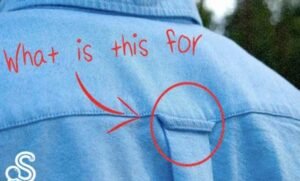
Have you ever taken a close look at your clothing and noticed a small loop at the back? It’s a common feature, particularly found in men’s dress shirts. While it might seem like a trivial detail, this little loop actually serves a practical purpose that you might not have been aware of until now.
Typically seen on shirts with button-down fronts, this loop can transform a casual outfit into something more sophisticated when paired with the right jeans and accessories. But its usefulness goes beyond mere fashion. For those who frequent the gym or are often on the move, this loop provides a convenient solution. Instead of worrying about finding a place to hang your shirt, you can simply use the loop to remove and hang it wherever you are.
Interestingly, this loop has also had a symbolic meaning in the realm of relationships. Removing the loop from a shirt was once thought to signify that the wearer was in a committed relationship and didn’t need to hang their clothes elsewhere. However, over time, this symbolism has faded, and the loop has become just another piece of fabric sewn into garments.
Delving into the history of American fashion, we discover that certain elements have stood the test of time, and the back-of-the-shirt loop is one such example. Known by various names like “fairy loop” or “locker loop,” it is a feature commonly found on button-down and oxford shirts. Originally designed for hanging shirts, its origins are often traced back to American sailors who used them aboard ships.
As fashion evolved, these loops became a staple of “preppy” attire, popularized by college students in the 1960s. It’s said that the button-down shirt style originated in Ivy League campuses, with clothing manufacturer Gant tracing its roots back to Yale University. The founder of the company initially offered this shirt design to Yale’s rowing team, and from there, its popularity spread.






